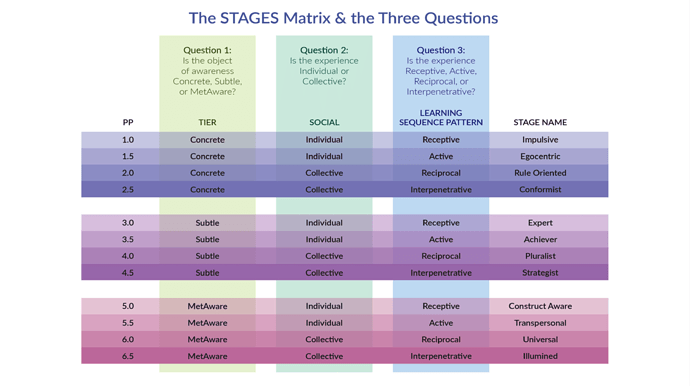Terri O’Fallon and Keith Martin-Smith dive into a deeper and more detailed exploration of her STAGES model. If you missed their first discussion, you can find it here — we highly recommend that you check that out before moving on to this discussion.
Terri and Keith focus on a smaller section of Terri’s model, stages 3.0 – 6.0 (roughly Amber/Orange to Turquoise/Indigo). Terri outlines what makes each level of her model unique from the last, what causes people to shift from one level to another, as well as what the mature expressions look like for 3.0, 4.0, and 5.0 stages.
She goes on to explain how people can use the model’s parameters to determine the developmental expression of others in coaching, psychotherapy, parenting, teaching, negotiating, etc., and how the STAGES model’s perspectival parameters can be a tool for generating more empathy and compassion.
In the STAGES model, structure-stages (Amber, Orange, Green, Teal, etc.) and state-stages (Gross, Subtle Causal, Witness, Nondual) begin to merge and stabilize. Terri explains exactly how this happens, and how both states and stages underlie the developmental process.
Finally, Terri explores her idea of developmental bypassing, and why we need spiritual work, shadow work, and developmental guidance to all in order to produce an integrated human experience.

 ? canoeing, kayaking, bodyboarding, other watercrafting? I’m a bit of a water baby too.
? canoeing, kayaking, bodyboarding, other watercrafting? I’m a bit of a water baby too.